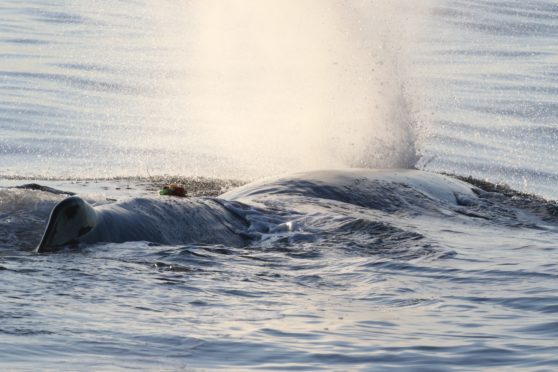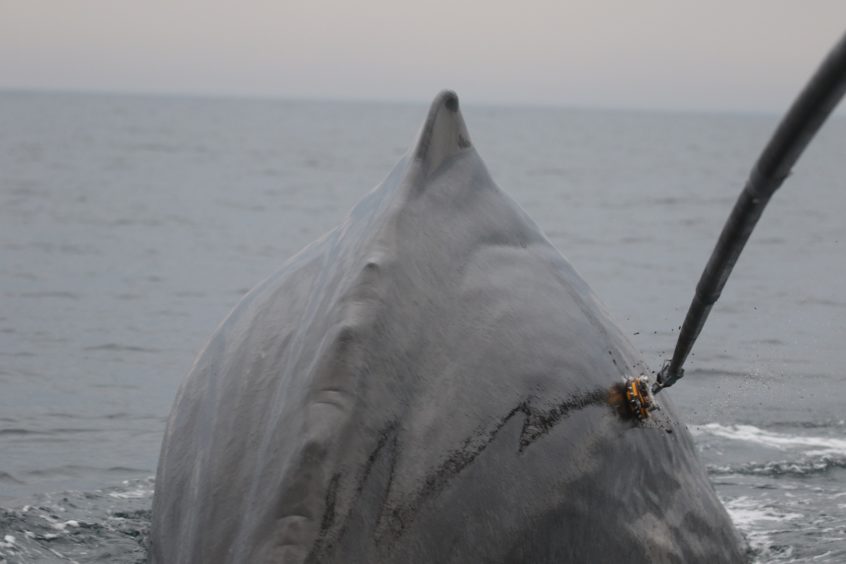New sonar technology is as disruptive to sperm whales as the pulsing type used by navies around the world for years, say St Andrews University researchers.
An international team, led by Professor Patrick Miller, carried out the first at-sea experiments on continuous sonar near Norway.
Prof Miller, of the Sea Mammal Research Unit at St Andrews, said: “Having set up similar experiments with sperm whales in Norway before, we already had data on their responses to pulsed sonar.
“Although whales responded to the new continuous sonar at a lower received sound level, the impact of the two sonar systems on feeding behaviour was similar.”
Continuous sonar pulses are transmitted at lower level, with content spread out over longer duration pulses.
Underwater noise pollution is a concern for species such as whales and dolphins which rely on sound for feeding, navigation and communication.
Underwater sonar is used in a number of areas, from fishing to oil exploration and anti-submarine warfare by navies.
Naval sonar has been shown to impact whale and dolphin behaviour and has been associated with stranding of deep-diving beaked whales.
The experiments, which involved finding and tagging sperm whales at sea using data loggers attached by suction cups, revealed sperm whales stopped foraging during both types of sonar exposures.
Lwering the amplitude, or reducing the content of sonar signal energy, could help navies to reduce impacts, it has been suggested.
The research also examined the effect of other potential competitor or predator species, pilot whales and killer whales, on sperm whale feeding.
Lead author Dr Saana Isojunno, Research Fellow at the Sea Mammal Research Unit, said: “While the presence of these species didn’t put sperm whales off feeding, their presence did make the sperm whales even more responsive to sonar so it seems to indicate sperm whales are extra vigilant to sonar after such an encounter.”











